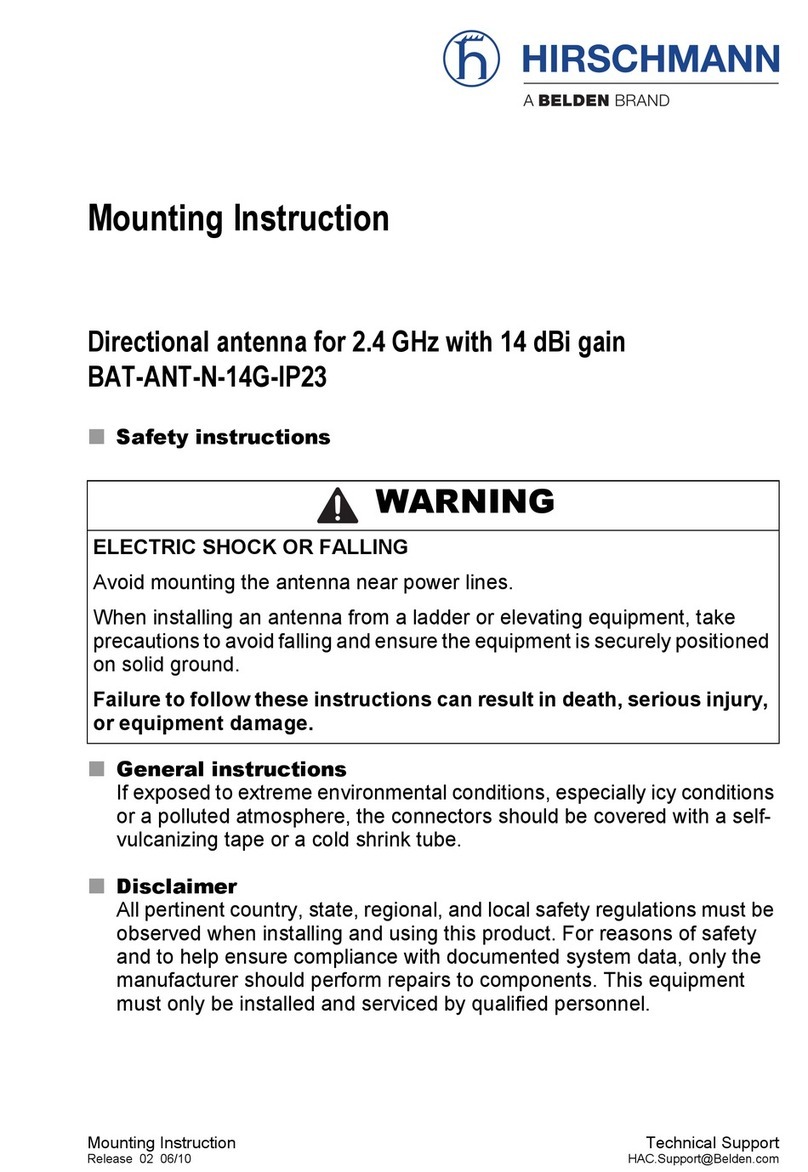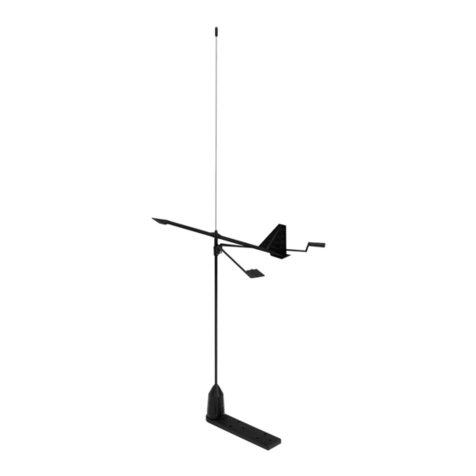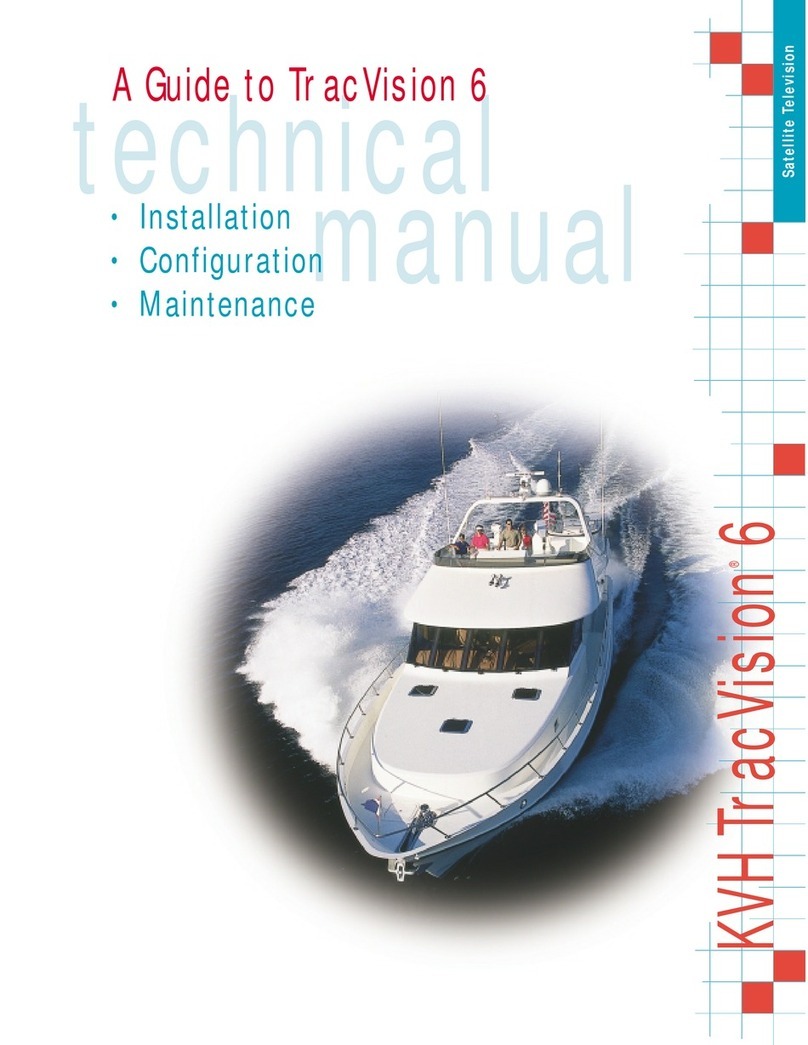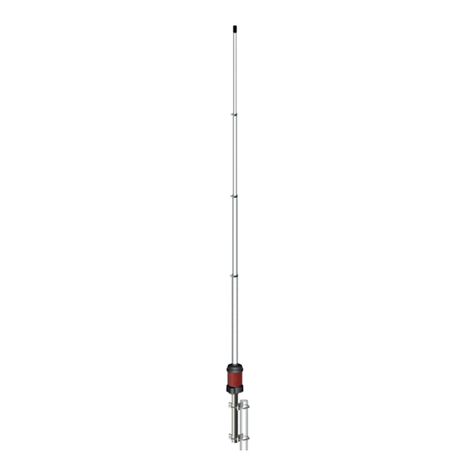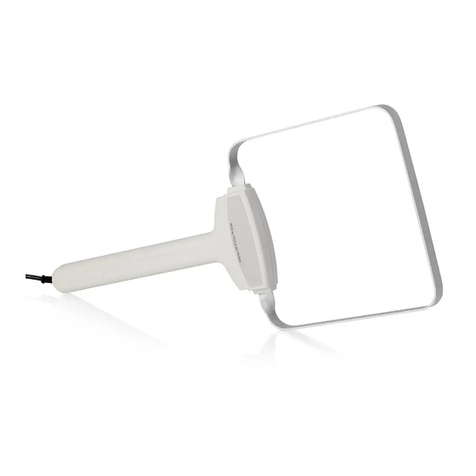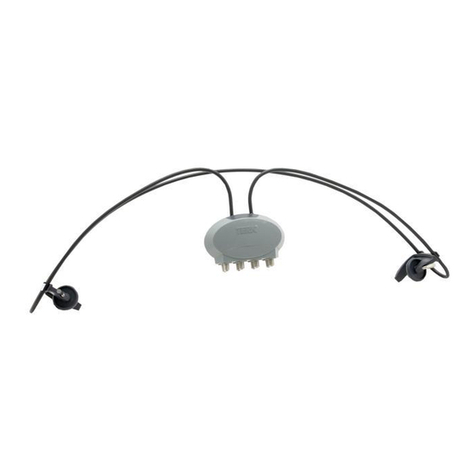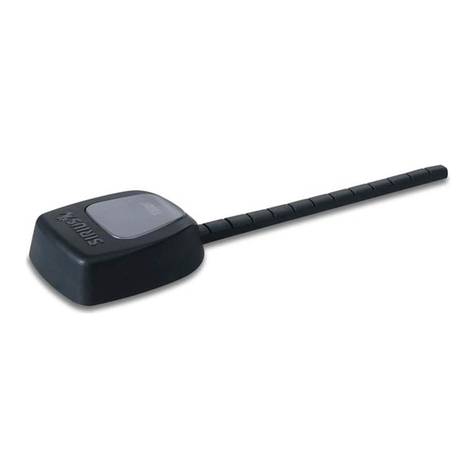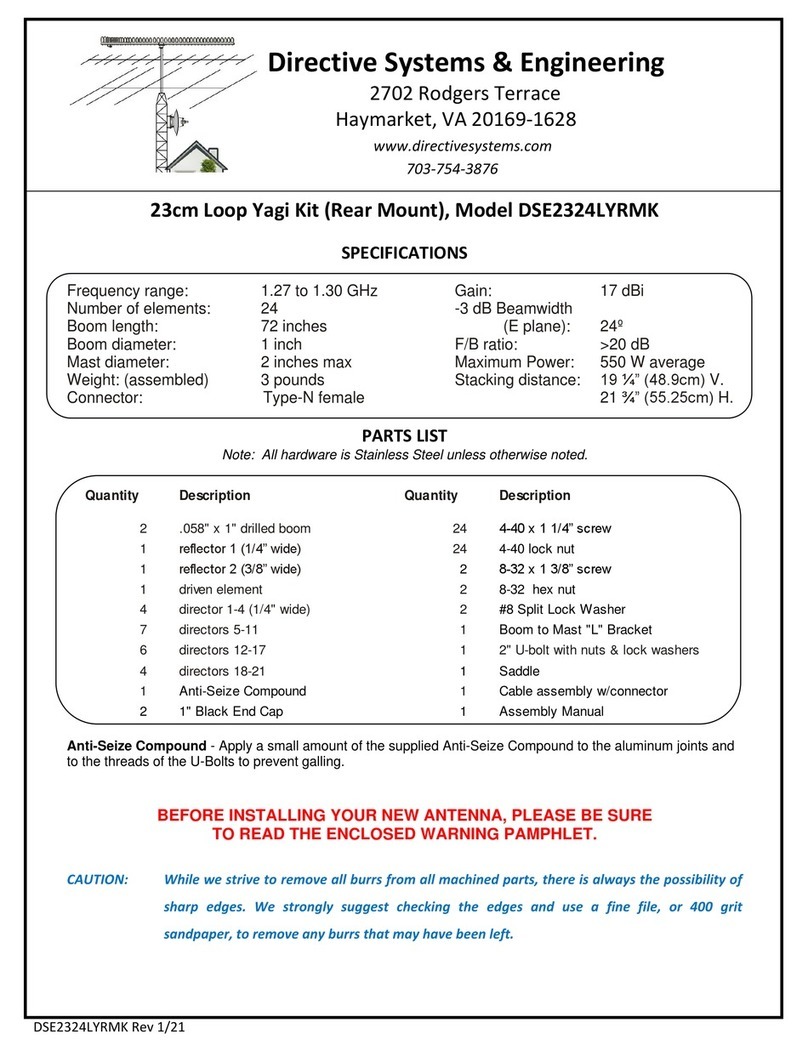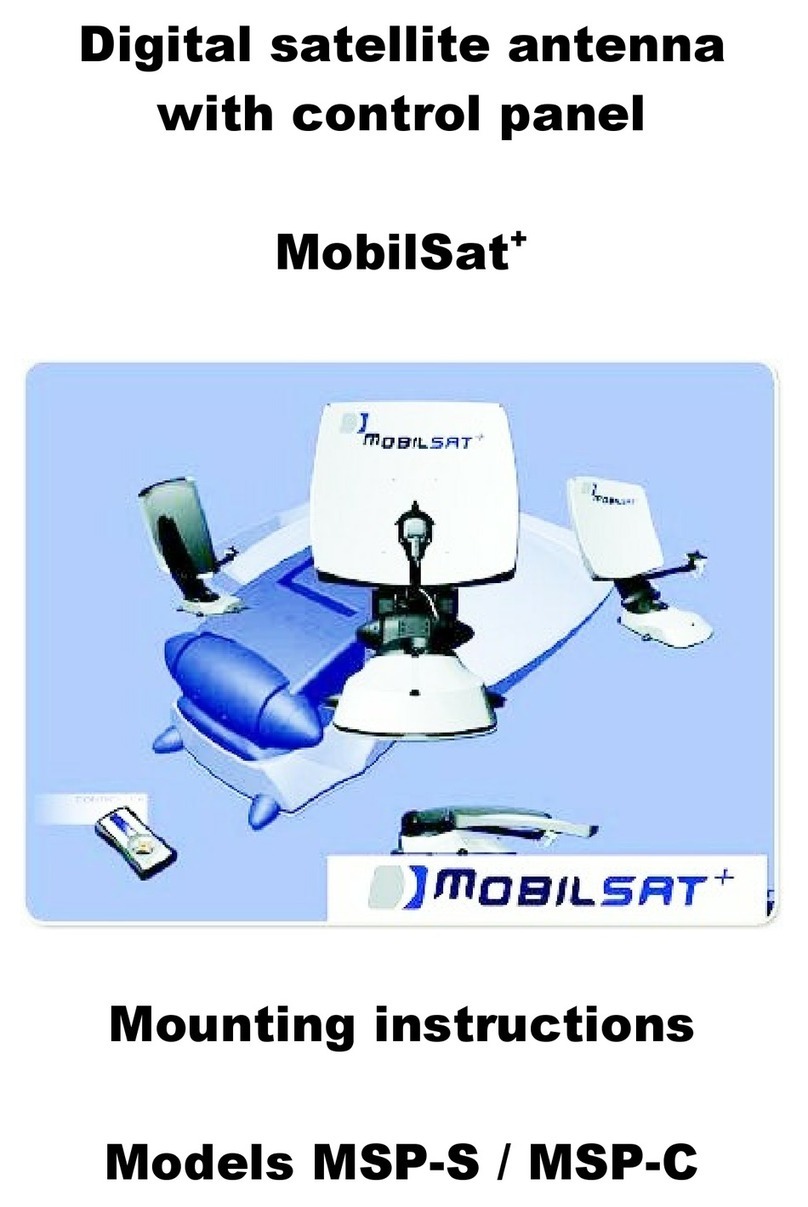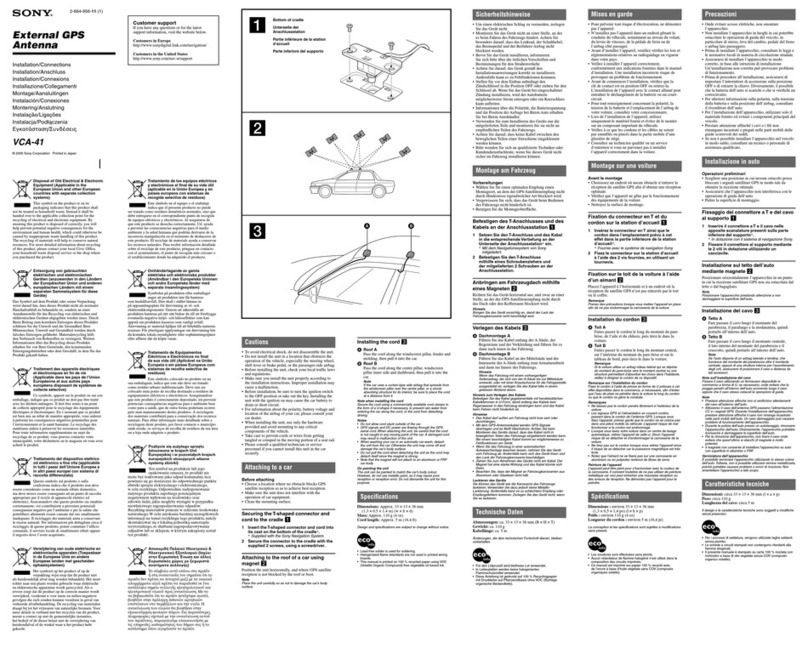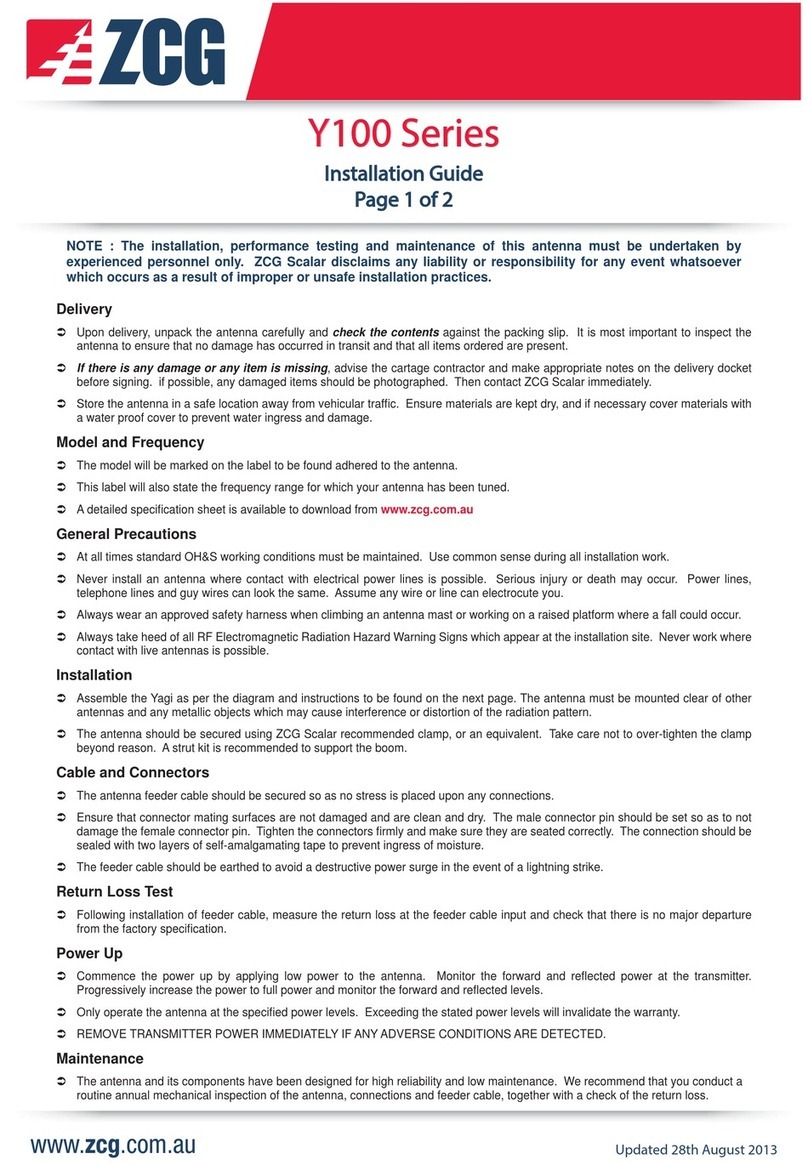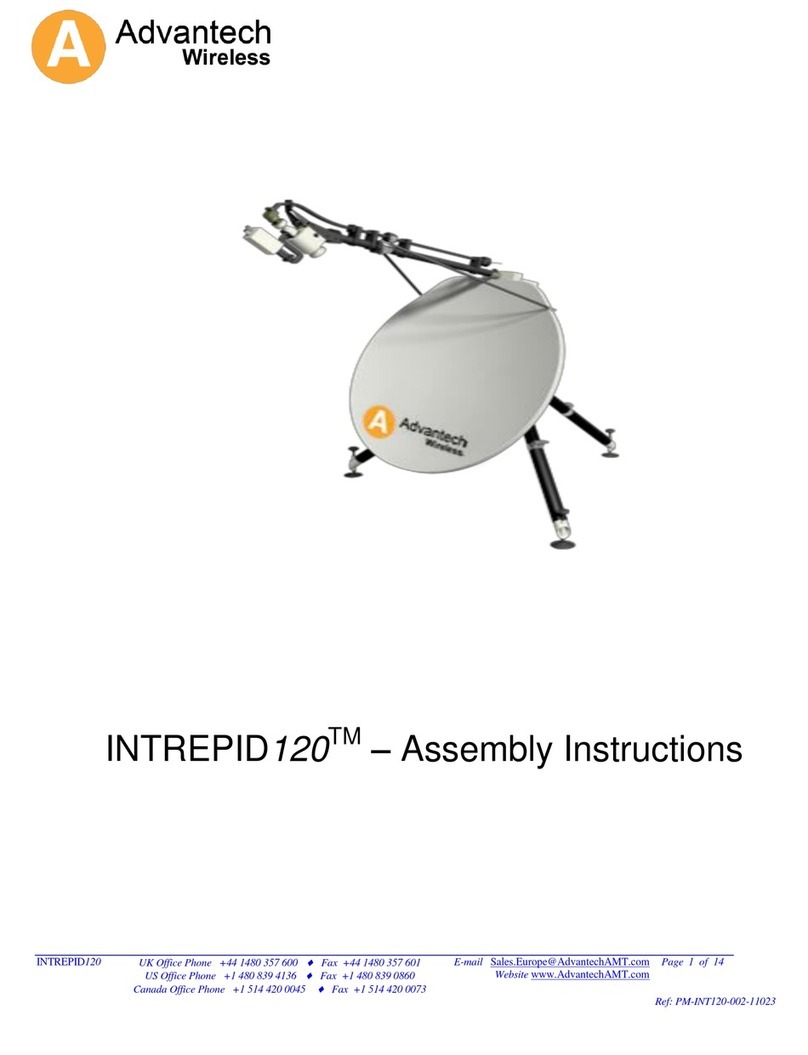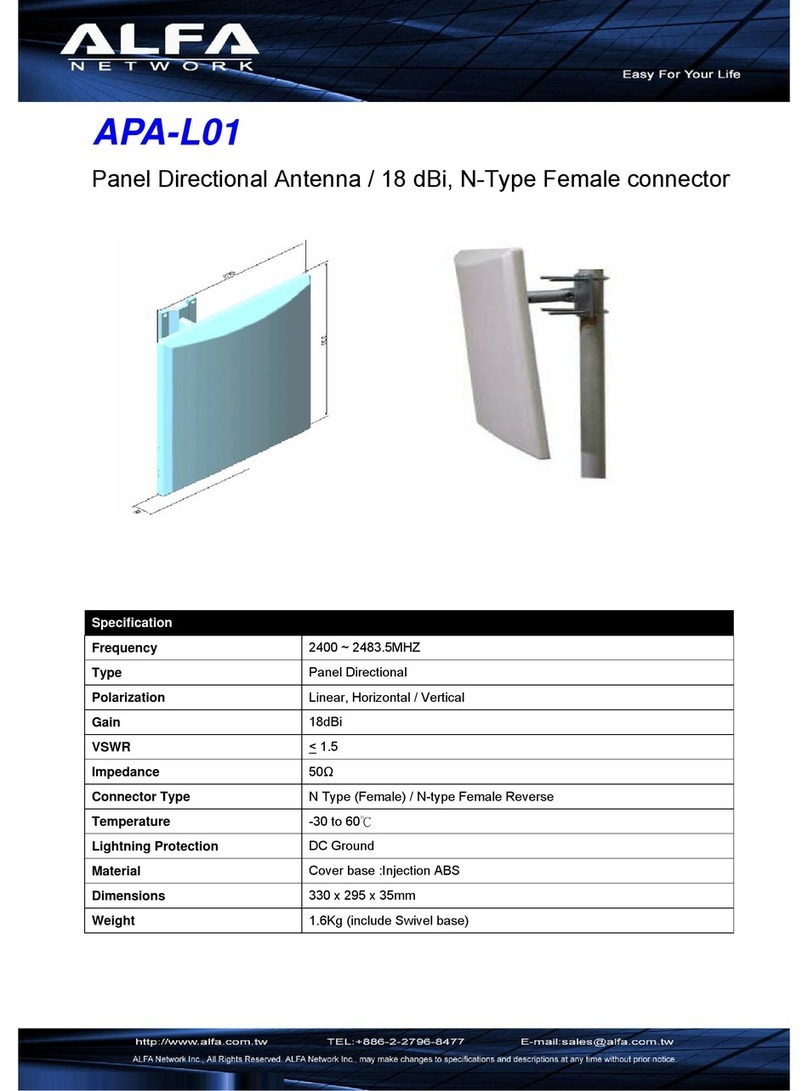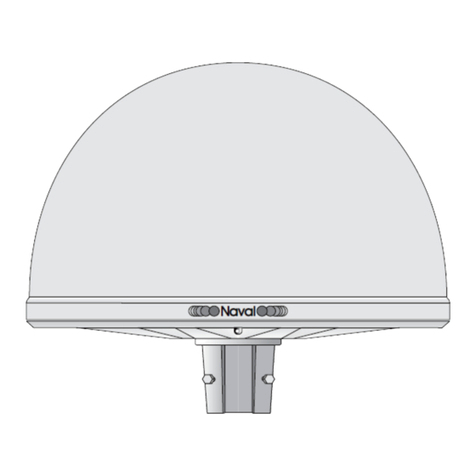
Napco iSecure Security System All technical manuals are available in PDF format at tech.napcosecurity.com 41
Install the ISEC-EXTANT-KIT (optional)
The ISEC-EXTANT-KIT Internal LTE Extended Antenna
Bracket Kit is installed inside the iSecure Go-Anywhere
Hub to permit the connection of an external LTE antenna to
improve reception in weak cellular signal areas. This Bracket
assembly, pictured in Fig. 1, provides an alternate SMA con-
nection to the LTE radio, allowing the use of Napco SLE-
ANTEXT antenna kits. The remote-mounted antenna is a
dual-wideband, indoor/outdoor LTE antenna that significantly
improves cellular reception (Note: Mount the SLE-ANTEXT
antenna before performing these instructions to allow its im-
mediate use after installing the ISEC-EXTANT-KIT and the
radio is re-powered). For details about the SLE-ANTEXT, see
WI2230, available from the NAPCO Technical Library at
tech.napcosecurity.com.
INSTALLATION STEPS
Bracket installation requires flat and Phillips head screwdrivers
and a cable zip tie (supplied).
1. Remove AC power from the Go-Anywhere Smart
Hub by unplugging the AC transformer.
2. Separate the Go-Anywhere Hub housing. With a flat
head screwdriver, push in the two tabs at the bottom to
unhook, then carefully separate the two parts of the Hub
housing. Note: Separating the housing disconnects the
battery.
3. Remove the top screw at the top of the unit that se-
cures the front LED Faceplate to the front housing.
4. Remove the LED Faceplate. From the front of the
housing, pull out the LED Faceplate to remove. .
5. On the inside of the LED Faceplate, remove the
screw that secures the right side light pipe (when view-
ing from the rear) as shown in Fig. 2.
6. While keeping the light pipe in place, position the
Bracket on top of the light pipe boss . Re-install the
screw removed in step 6 and install an additional screw
as shown in Fig. 2.
7. Connect the Antenna (SMA female) cable end to the
male threaded end of the Bracket (see Fig. 3). Route
the cable through the Hub housing.
8. Insert the very small Antenna Plug located at the
end of the Bracket (shown in Fig. 4) into the correct PC
board sockets as described in Fig. 5:
Be sure the plug freely rotates but remains connected.
If this plug should disconnect, simply insert and press
firmly until connected. Handle wire with care; do not
twist, create sharp bends or apply excessive force.
9. Replace the LED Faceplate. Be careful to ensure
both Antenna Plugs remain connected to their sockets.
Fig. 4: Antenna Plug
Fig. 1: Antenna Bracket Assembly ("Bracket")
Fig. 2: Two views of rear LED Faceplate: Secure Bracket to
right side with two screws (arrows) on top of light pipe.
Fig. 3: Connect the cable to the Bracket.

